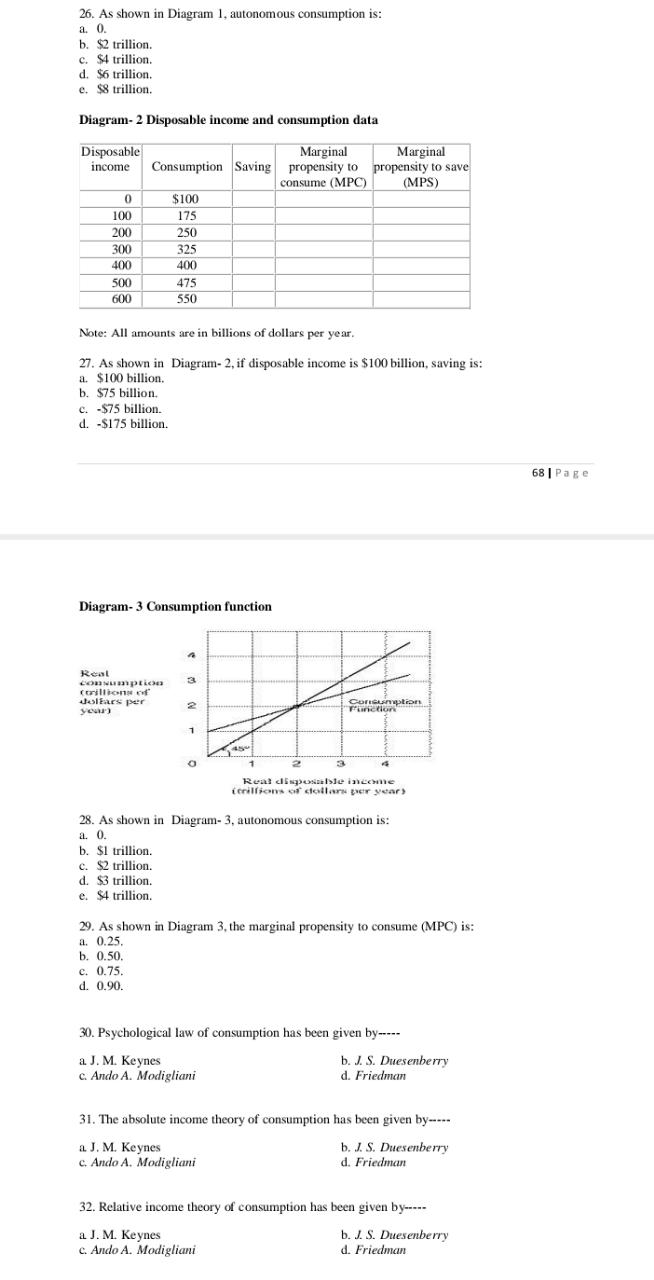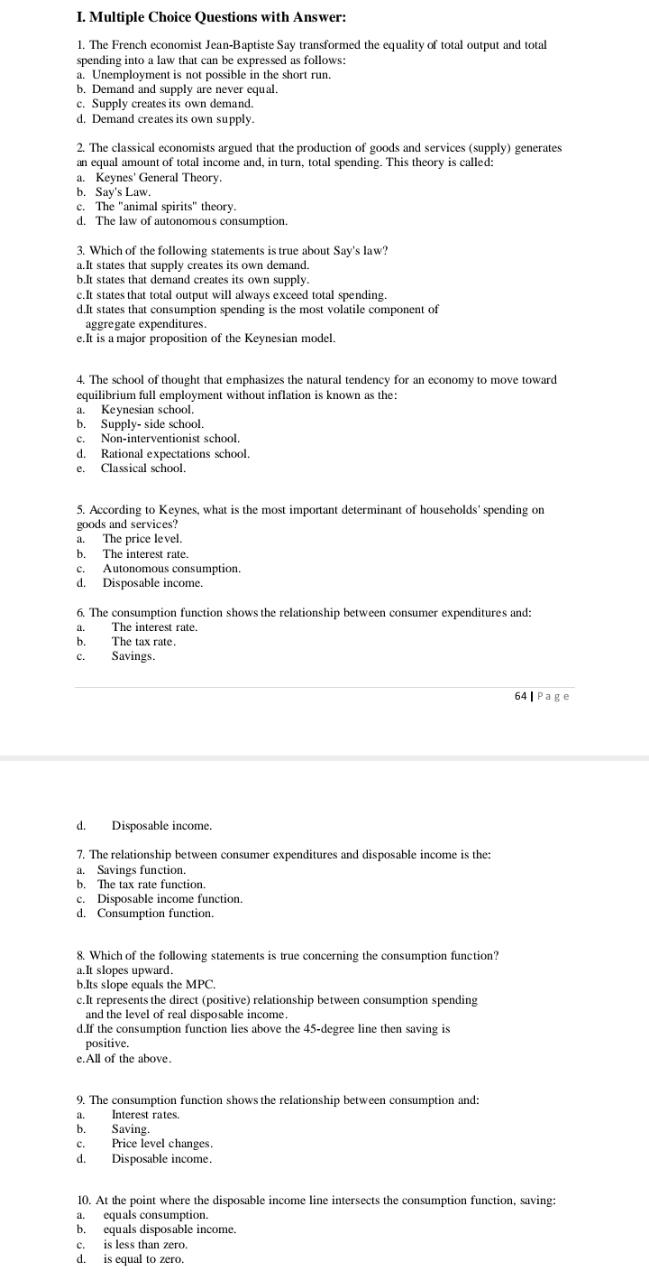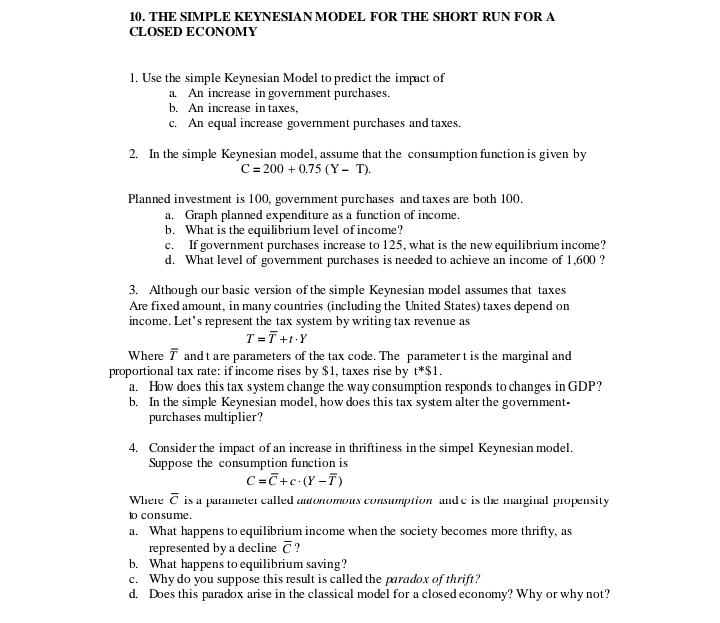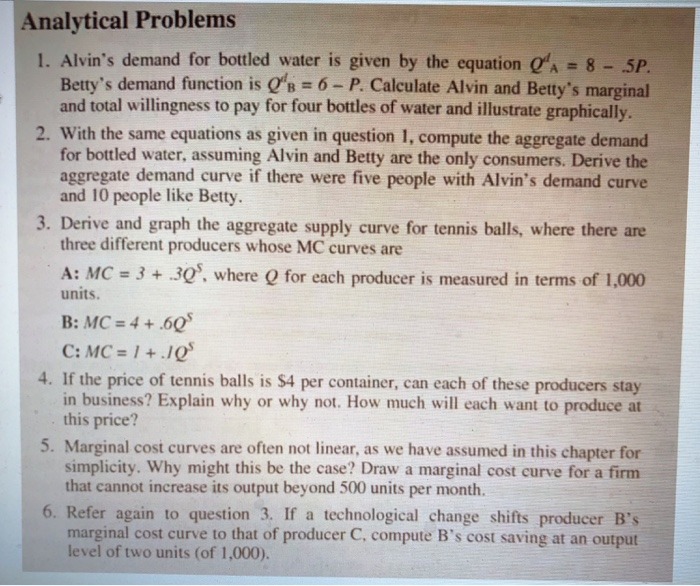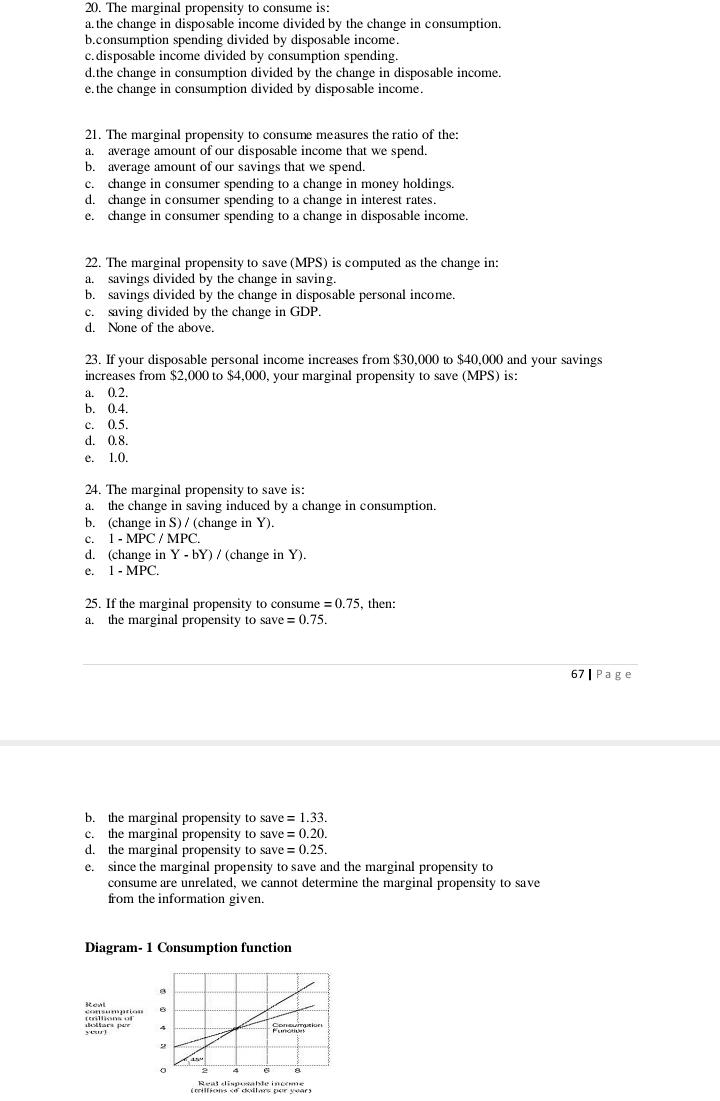
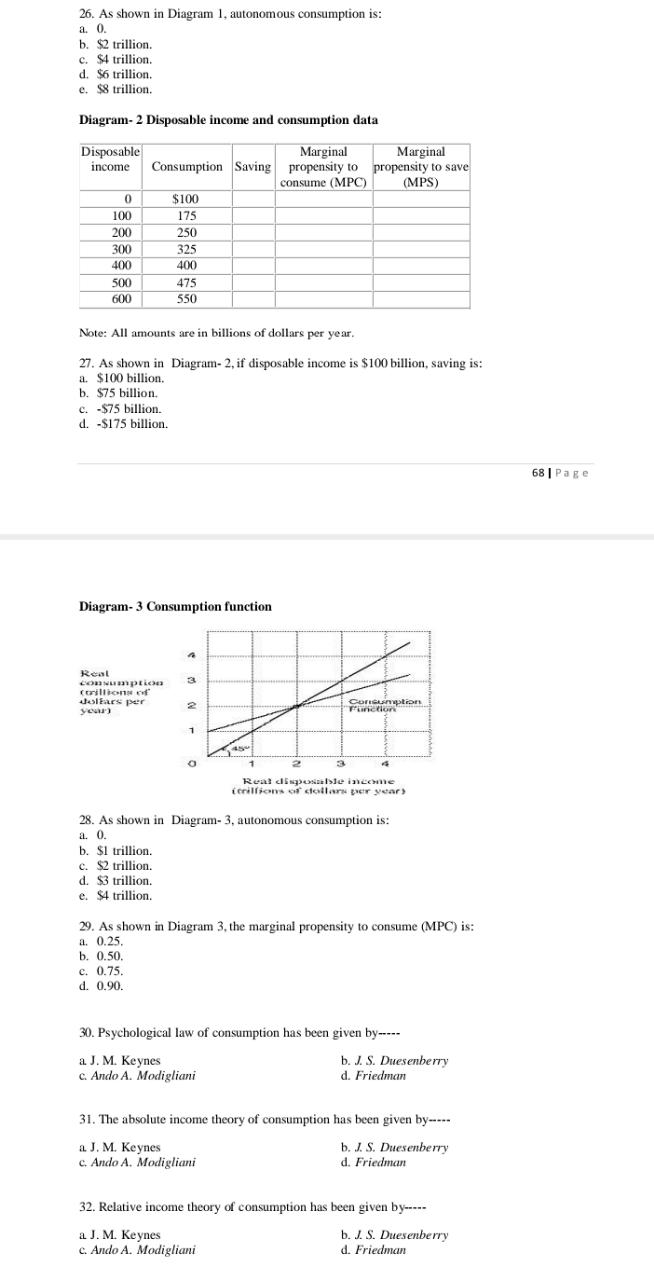

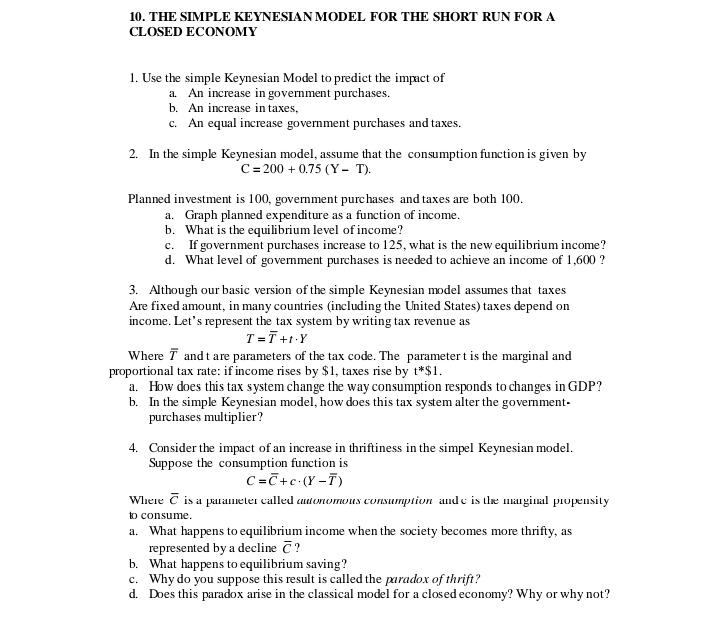
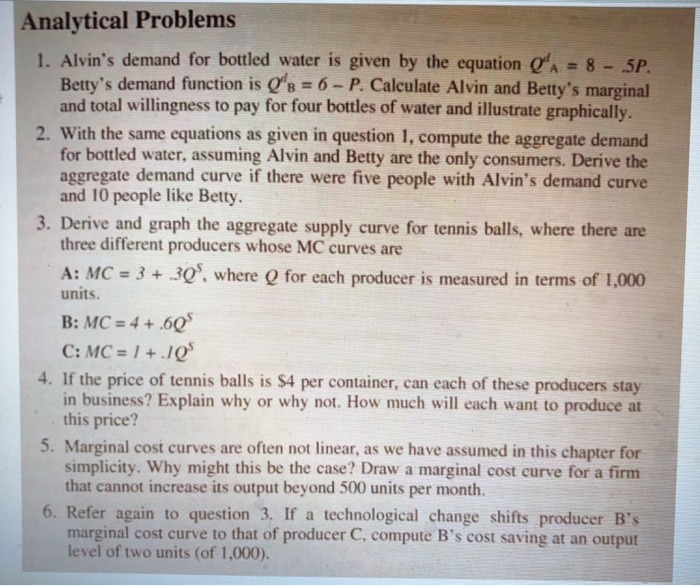
Econ assignment.
20. The marginal propensity to consume is: a. the change in disposable income divided by the change in consumption. b.consumption spending divided by disposable income. c. disposable income divided by consumption spending. d. the change in consumption divided by the change in disposable income. e. the change in consumption divided by disposable income 21. The marginal propensity to consume measures the ratio of the: a. average amount of our disposable income that we spend. b. average amount of our savings that we spend. C. change in consumer spending to a change in money holdings. d. change in consumer spending to a change in interest rates. e. change in consumer spending to a change in disposable income. 22. The marginal propensity to save (MPS) is computed as the change in: a. savings divided by the change in saving. b. savings divided by the change in disposable personal income. C. saving divided by the change in GDP. d. None of the above. 23. If your disposable personal income increases from $30,000 to $40,000 and your savings increases from $2,000 to $4,000, your marginal propensity to save (MPS) is: a. 0.2. b. 0.4. C. 0.5. d. 0.8. e. 1.0. 24. The marginal propensity to save is: a. the change in saving induced by a change in consumption. b. (change in S) / (change in Y). C. 1 - MPC / MPC. d. (change in Y - bY) / (change in Y). e. 1 - MPC. 25. If the marginal propensity to consume = 0.75, then: a. the marginal propensity to save = 0.75. 67 | Page b. the marginal propensity to save = 1.33. c. the marginal propensity to save = 0.20. d. the marginal propensity to save = 0.25. e. since the marginal propensity to save and the marginal propensity to consume are unrelated, we cannot determine the marginal propensity to save from the information given. Diagram- 1 Consumption function ibullard pur26. As shown in Diagram 1, autonomous consumption is: a. 0. b. $2 trillion. c. $4 trillion. d. $6 trillion. . $8 trillion. Diagram- 2 Disposable income and consumption data Disposable Marginal Marginal income Consumption Saving propensity to propensity to save consume (MPC) (MPS) 0 $100 100 175 200 250 300 325 400 400 500 475 600 550 Note: All amounts are in billions of dollars per year. 27. As shown in Diagram- 2, if disposable income is $100 billion, saving is: a. $100 billion. b. $75 billion. C. -$75 billion. d. -$175 billion. 68 | Page Diagram- 3 Consumption function Real consumption (trillions of Joliars per 2 Consumption year) Real disposable income (enillion of dollars per year) 28. As shown in Diagram- 3, autonomous consumption is: a. 0. b. $1 trillion. c. $2 trillion. d. $3 trillion. e. $4 trillion. 29. As shown in Diagram 3, the marginal propensity to consume (MPC) is: a. 0.25. b. 0.50. c. 0.75. d. 0.90. 30. Psychological law of consumption has been given by---- a. J. M. Keynes b. J. S. Duesenberry c. Ando A. Modigliani d. Friedman 31. The absolute income theory of consumption has been given by--.- a J. M. Keynes b. J. S. Duesenberry c. Ando A. Modigliani d. Friedman 32. Relative income theory of consumption has been given by-...- a J. M. Keynes b. J. S. Duesenberry C. Ando A. Modigliani d. FriedmanI. Multiple Choice Questions with Answer: 1. The French economist Jean-Baptiste Say transformed the equality of total output and total spending into a law that can be expressed as follows: a. Unemployment is not possible in the short run. b. Demand and supply are never equal. c. Supply creates its own demand. d. Demand creates its own supply- 2. The classical economists argued that the production of goods and services (supply) generates an equal amount of total income and, in turn, total spending. This theory is called: a. Keynes' General Theory. b. Say's Law. c. The "animal spirits" theory. d. The law of autonomous consumption. 3. Which of the following statements is true about Say's law? a. It states that supply creates its own demand. b.It states that demand creates its own supply. c. It states that total output will always exceed total spending. d.It states that consumption spending is the most volatile component of aggregate expenditures. e.It is a major proposition of the Keynesian model. 4. The school of thought that emphasizes the natural tendency for an economy to move toward equilibrium full employment without inflation is known as the: a. Keynesian school. b. Supply- side school. C. Non-interventionist school. d. Rational expectations school. e. Classical school. 5. According to Keynes, what is the most important determinant of households' spending on goods and services? a. The price level. b. The interest rate. C. Autonomous consumption. d. Disposable income. 6. The consumption function shows the relationship between consumer expenditures and: a. The interest rate. b. The tax rate. C. Savings. 64 | Page d. Disposable income. 7. The relationship between consumer expenditures and disposable income is the: a. Savings function. b. The tax rate function. c. Disposable income function. d. Consumption function. 8. Which of the following statements is true concerning the consumption function? a.It slopes upward. b.Its slope equals the MPC. c. It represents the direct (positive) relationship between consumption spending and the level of real disposable income d.If the consumption function lies above the 45-degree line then saving is positive. e.All of the above. 9. The consumption function shows the relationship between consumption and: a. Interest rates. b. Saving. Price level changes. Disposable income. 10. At the point where the disposable income line intersects the consumption function, saving: a. equals consumption. b. equals disposable income. C. is less than zero. d. is equal to zero.10. THE SIMPLE KEYNESIAN MODEL FOR THE SHORT RUN FOR A CLOSED ECONOMY 1. Use the simple Keynesian Model to predict the impact of a. An increase in government purchases. b. An increase in taxes. C. An equal increase government purchases and taxes. 2. In the simple Keynesian model, assume that the consumption function is given by C =200 + 0.75 (Y - T). Planned investment is 100, government purchases and taxes are both 100. a. Graph planned expenditure as a function of income. b. What is the equilibrium level of income? c. If government purchases increase to 125, what is the new equilibrium income? d. What level of government purchases is needed to achieve an income of 1,600 ? 3. Although our basic version of the simple Keynesian model assumes that taxes Are fixed amount, in many countries (including the United States) taxes depend on income. Let's represent the tax system by writing tax revenue as T = T+t. Y Where T and t are parameters of the tax code. The parameter t is the marginal and proportional tax rate: if income rises by $1, taxes rise by t*$1. a. How does this tax system change the way consumption responds to changes in GDP? b. In the simple Keynesian model, how does this tax system alter the government- purchases multiplier? 4. Consider the impact of an increase in thriftiness in the simpel Keynesian model. Suppose the consumption function is C =C+c. ( Y-T) Where C is a parameter called autonomous consumption and c is the marginal propensity to consume. a. What happens to equilibrium income when the society becomes more thrifty, as represented by a decline C ? b. What happens to equilibrium saving? c. Why do you suppose this result is called the paradox of thrift? d. Does this paradox arise in the classical model for a closed economy? Why or why not?Analytical Problems 1. Alvin's demand for bottled water is given by the equation CA = 8 - 5P. Betty's demand function is QB = 6 - P. Calculate Alvin and Betty's marginal and total willingness to pay for four bottles of water and illustrate graphically. 2. With the same equations as given in question 1, compute the aggregate demand for bottled water, assuming Alvin and Betty are the only consumers. Derive the aggregate demand curve if there were five people with Alvin's demand curve and 10 people like Betty. 3. Derive and graph the aggregate supply curve for tennis balls, where there are three different producers whose MC curves are A: MC = 3 + .30', where O for each producer is measured in terms of 1,000 units. B: MC =4+.605 C: MC =1+.10' 4. If the price of tennis balls is $4 per container, can each of these producers stay in business? Explain why or why not. How much will each want to produce at this price? 5. Marginal cost curves are often not linear, as we have assumed in this chapter for simplicity. Why might this be the case? Draw a marginal cost curve for a firm that cannot increase its output beyond 500 units per month. 6. Refer again to question 3. If a technological change shifts producer B's marginal cost curve to that of producer C. compute B's cost saving at an output level of two units (of 1,000)






